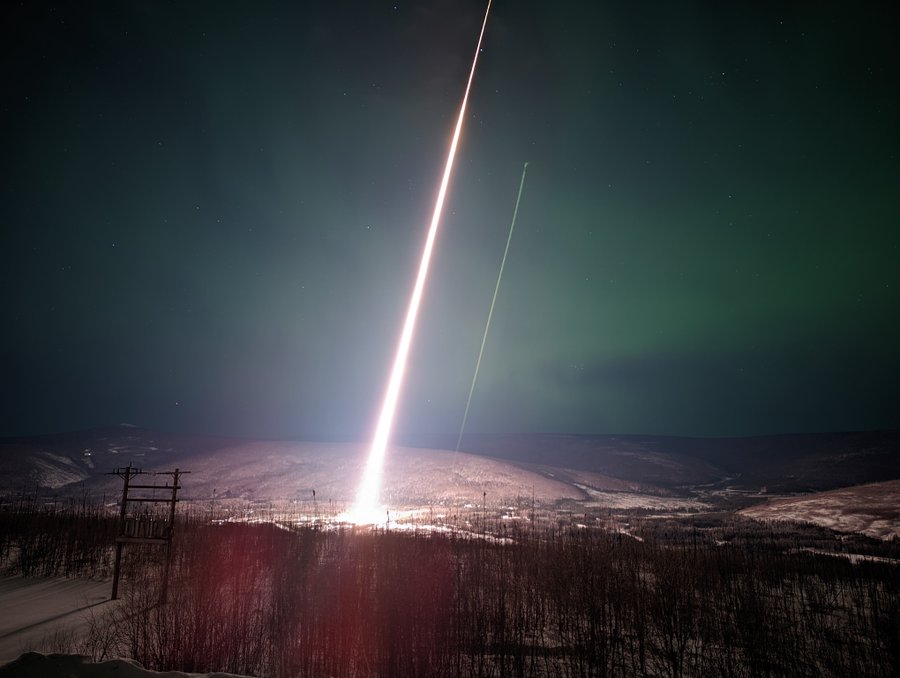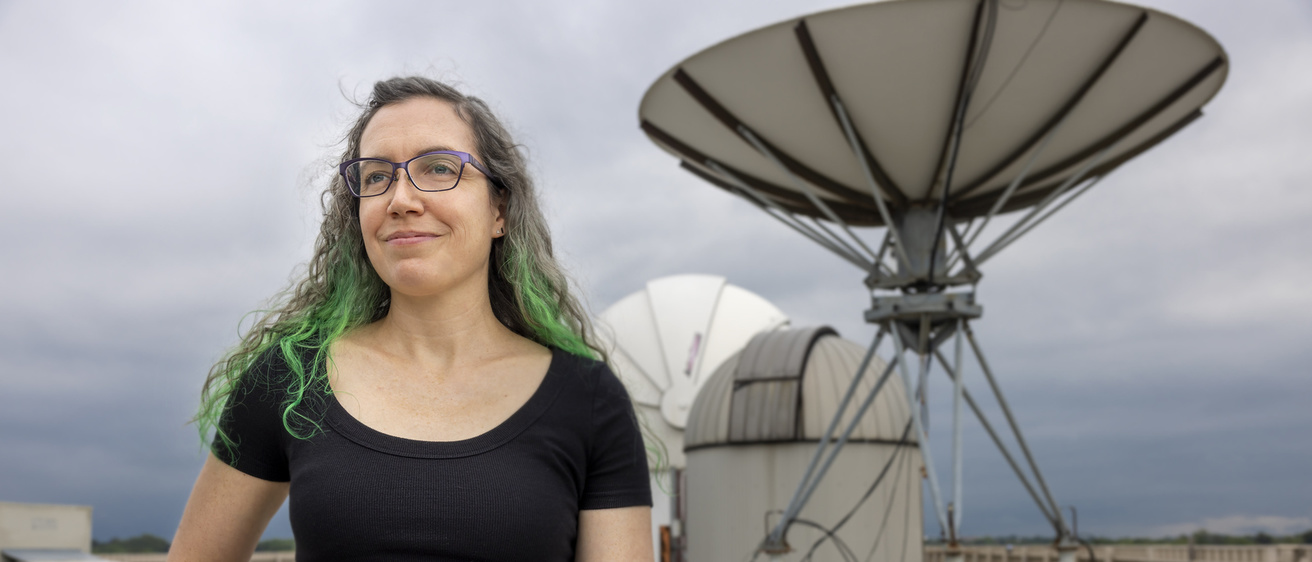Allison Jaynes’s team chose the dates more than a year in advance. They knew they needed to launch in darkness, when the visible moon was at its smallest, so that moonlight wouldn’t interfere with their observations. But when the time came, all they could do was hope for the right weather to launch a rocket into the flickering glow of an aurora borealis — the northern lights.
During a two-week window in March 2022, the team waited every night at Alaska’s Poker Flat Research Range for a clear sky. Each night, Jaynes — a co-investigator of the mission and an astrophysicist at the University of Iowa — had to help decide whether to launch the rocket or wait for the next evening.
“These launches are nerve-racking,” says Jaynes. “You don't know if you're going to get something good. In the end, you don't know if you're about to waste $4 million.”

Jaynes, this year’s recipient of APS’s Katherine E. Weimer Award in plasma physics, discussed her research at this year’s meeting of the APS Division of Plasma Physics in Denver, Colorado. She studies the physics of Earth’s aurorae, known for their green and purple light shows at extremely southern or northern latitudes. The light comes from charged particles — mostly protons and electrons — that fall into the atmosphere. These particles, known as the solar wind, come from the Sun and arrive at Earth in a state of matter known as plasma. Trapped by Earth’s magnetic field, the particles follow the planet’s magnetic field lines toward the poles.
“The particles hit different types of molecules in different layers of our atmosphere,” says Jaynes. Hitting oxygen gives off greenish yellow light; hitting nitrogen gives off reds and blues.
Scientists have been launching rockets to study auroras for decades, but data is still limited, says Jaynes. In each launch, the rocket rises and falls back to Earth in the span of ten or fifteen minutes. Even after years of rocket launches, “in total, we have hours’ worth of data to analyze,” says Jaynes.
Jaynes wants to understand how much energy auroras transfer to Earth, separate from other sources of solar energy, like ultraviolet radiation. “If you think of our atmosphere as a sponge, it's soaking up all the energy that comes from the Sun,” she says. Engineers can use Jaynes’ research to better design and protect manmade satellites, which can be damaged by solar wind.
Researchers can also use the data to explore how auroras influence Earth’s atmosphere and weather. For example, a 2022 study found that auroras destroyed ozone in a 400-kilometer-wide patch, which is about a magnitude narrower than the famous ozone hole above Antarctica, about 50 kilometers above Earth’s surface. The researchers expected the hole to heal naturally, but it’s a case study in auroras’ impacts. “Local sudden changes in ozone ties into the entire climate system of our planet,” says Jaynes.
To describe auroras, Jaynes represents the solar system as an “ocean” of plasma, with the planets sitting like rocks in this ocean. The plasma arrives at Earth in waves of varying frequencies and structures. “Think of throwing some gravel into a lake,” says Jaynes. “You see all kinds of ripples. Some move slowly, and some move quickly. Some make these big splashes, some small, and they overlap each other to create interference.”
Different plasma waves cause different types of auroras. For example, Jaynes studies pulsating auroras, which appear as “big patches of light that turn on and off all at once” and stem from plasma waves known as dawn chorus waves. The name originates from World War I, where military officers’ communications antennae picked up the dawn chorus waves’ telltale chirp while listening for enemy transmissions in the early morning.
Planets beyond Earth interact with surrounding plasma in their own way. Jaynes is particularly interested in Jupiter, which has the largest magnetic fields in our solar system aside from the Sun. “Jupiter has [auroras] all the time,” she says. “It’s just constant, particles dumping into the atmosphere.”
But astrophysicists aren’t the only ones studying auroras, Jaynes says. Scientists have drawn on the expertise of passionate members of the public — namely, aurora chasers and photographers. For example, in 2016, these citizen scientists discovered a new type of aurora, a purplish ribbon fringed with green, which they named Steve. Rather than forming directly from charged solar wind particles hitting atmospheric particles, Steve’s light comes from the charged particles heating the sky. (Researchers retroactively made Steve an acronym, “Strong Thermal Emission Velocity Enhancement.”)
For Jaynes, this is great news, because who is doing the science is as important as the science itself. During her talk, she mentioned the “disturbingly low” number of gender and racial minorities in plasma physics: Over the last decade, women have made up about 10 percent of the membership of APS’s Division of Plasma Physics, compared to about 18 percent of APS at large. In Iowa, Jaynes runs a summer undergraduate research program and high school summer camp that recruit students whose backgrounds are underrepresented in physics.
As for last year’s rocket launch, Jaynes’s team successfully captured the data they sought. They were studying light pulses known as microbursts, lasting less than a second, that occur during pulsating aurora. “They’re these little confetti flashes of light,” she explains. They measured the energy of these microbursts to understand their contribution to auroras.
Some of their results have been accepted for publication, but the work itself is rewarding. “That’s what captured my imagination,” Jaynes says. “Going to a place, observing the natural world, and trying to uncover the fundamental laws that govern that beautiful thing you’re seeing.”
